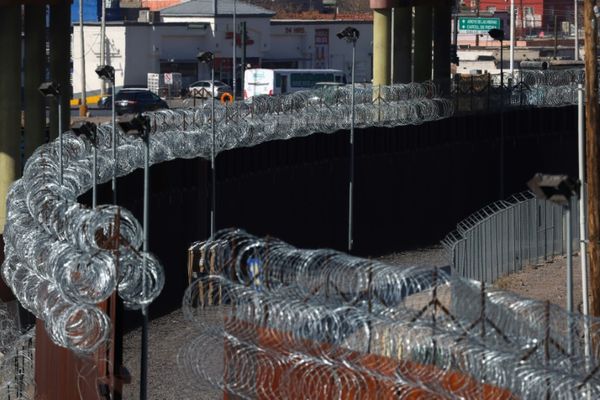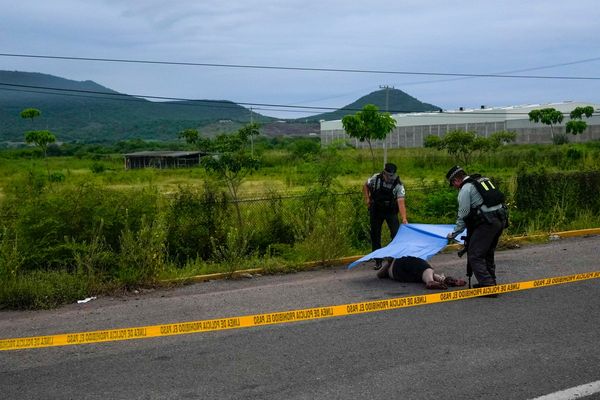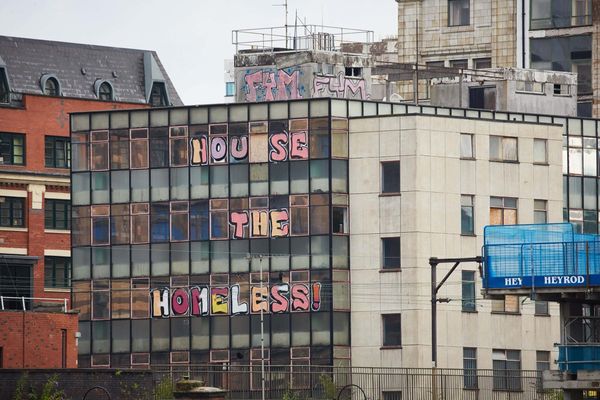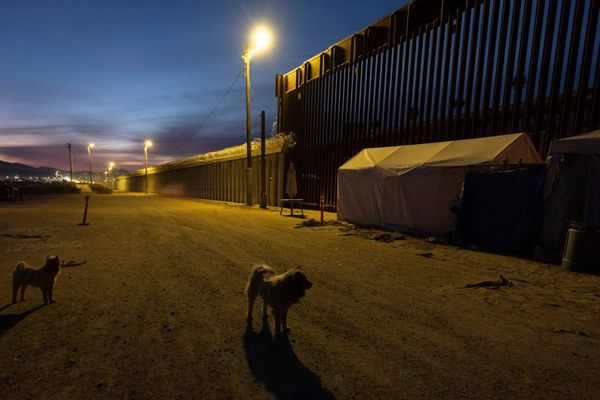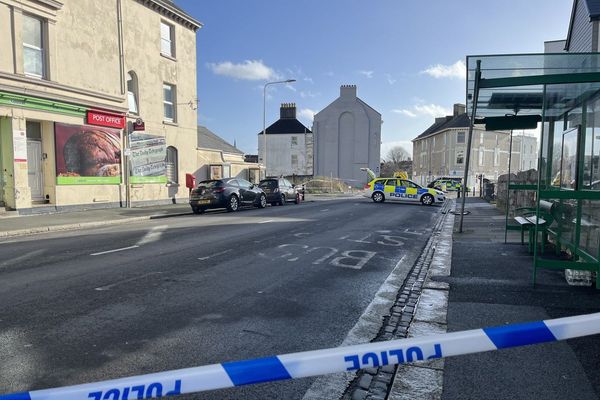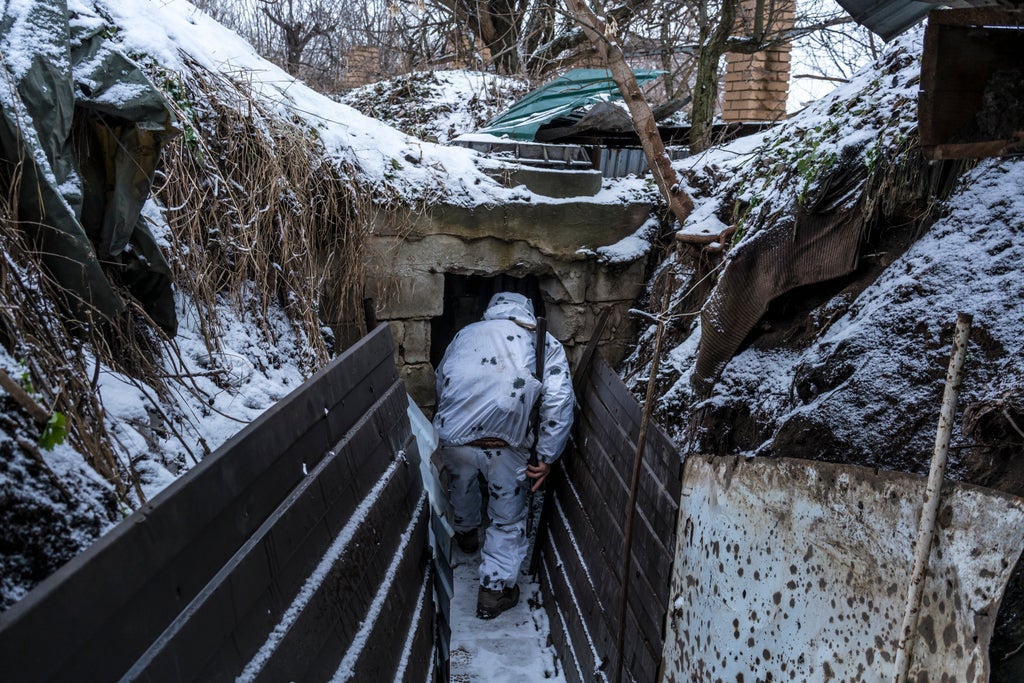
Russia has finally launched its long-feared “full-scale invasion” of Ukraine after Vladimir Putin announced a “special military operation” in a televised address to his citizens in the early hours of Thursday morning.
Explosions were reported soon afterwards on the outskirts of the cities of Kharkiv, Kramatorsk, Mariupol, as well as the capital Kyiv, prompting many Ukrainians to form queues at supermarkets, ATMs and petrol stations in preparation for weathering the siege or attempting to flee.
Ukrainian president Volodymyr Zelensky said his government has introduced martial law in all territories of the state and urged citizens to stay at home as much as possible.
Meanwhile the country’s airports have been shut down temporarily and secured against potential Russian aircraft landings while Russia has closed its own airspace around the border to civilian access for the next four months.
According to Mr Zelensky, 137 Ukrainian civilians and soldiers were killed on the first day of fighting and another 316 injured as he appealed to the international community to do more to help. He pledged to remain in Kyiv as Russian missile strikes began to target the city in the early hours of Friday morning.
Tensions in Eastern Europe have rumbled on since December when Russia stationed an estimated 130,000 soldiers along its western border and then another 30,000 in Belarus, consistently denying it had any attention of making incursions into Ukraine.
Frantic diplomatic negotiations were pursued by the likes of US secretary of state Antony Blinken, French president Emmanuel Macron, German chancellor Olaf Scholz and UK foreign secretary Liz Truss in the hoping of averting calamity but ultimately appear to have come to nothing.
The situation escalated drastically on Monday when Mr Putin moved to officially recognise the pro-Russian breakaway regions of the Donetsk People’s Republic (DPR) and Luhansk People’s Republic (LPR) as independent states, enabling him to move military resources into those areas in anticipation of the coming assault under the guise of extending protection to allies.
The international community hit out at the decision, with the United Nations Security Council expressing “great concern” and the US suggesting, apparently correctly, that the play was a pretext for a full-scale military assault.
Vassily Nebenzia, the Russian ambassador to the UN, insisted there would be no “new bloodbath” in eastern Ukraine but warned the West to “think twice” before making matters worse.
US president Joe Biden, UK prime minister Boris Johnson and UN secretary general Antonio Guterres have since joined other global powers in condemning Moscow’s “unprovoked and unjustified” attack of Thursday morning and promised to hold it “accountable”, with the Western powers subsequently introducing another round of tough economic sanctions against Russian banks and businesses.
The sanctions so far unveiled by the West, including steps taken to hinder Russian banks and wealthy plutocrats from doing business abroad and the blocking of regulatory approval for the lucrative Nord Stream 2 natural gas pipeline, have been criticised as inadequate and senior Russia officials like Dmitry Medvedev and Sergey Lavrov have shrugged them off with a smirk.
The return of warfare to the region comes eight years after Russia annexed the Crimean Peninsula and sparked fighting in the industrial heartland of Donbas, where a low-level conflict that has since killed more than 14,000 people is still rumbling on between Kyiv and the pro-Russian separatists.
In anticipation of the all-out war the West hoped would never come, the North Atlantic military alliance previously sent additional ships and fighter jets to deployments in neighbouring eastern states like Poland and Lithuania – who are now bracing for an influx of refugees as many Ukrainians flee their homeland for safety– while the US and UK withdrew diplomats’ families from Ukraine as a precaution and some airlines stopped making flights into Kyiv.
The UK and the US have already provided Ukraine with some additional forces, the former flying anti-tank weapons to the country, stationing 350 soldiers in Poland and placing another 1,000 on standby and doubling its troop deployment in Estonia. Further weapons and resources are now expected to follow.
But such gestures are likely to prove cold comfort to Kyiv given the significant gulf in military strength between the two combatants.
While Ukraine has under 250,000 troops and is looking to add a further 130,000 to its ranks, Russia has almost a million soldiers at its disposal. It also has much more sophisticated and abundant military hardware.
Speaking of the disparity between the two armies, Vadym Prystaiko, Ukraine’s ambassador to the UK, said it is unfortunate that his country is not part of Nato.
“We are not part of this family and we are facing the biggest army in Europe by ourselves,” he said.
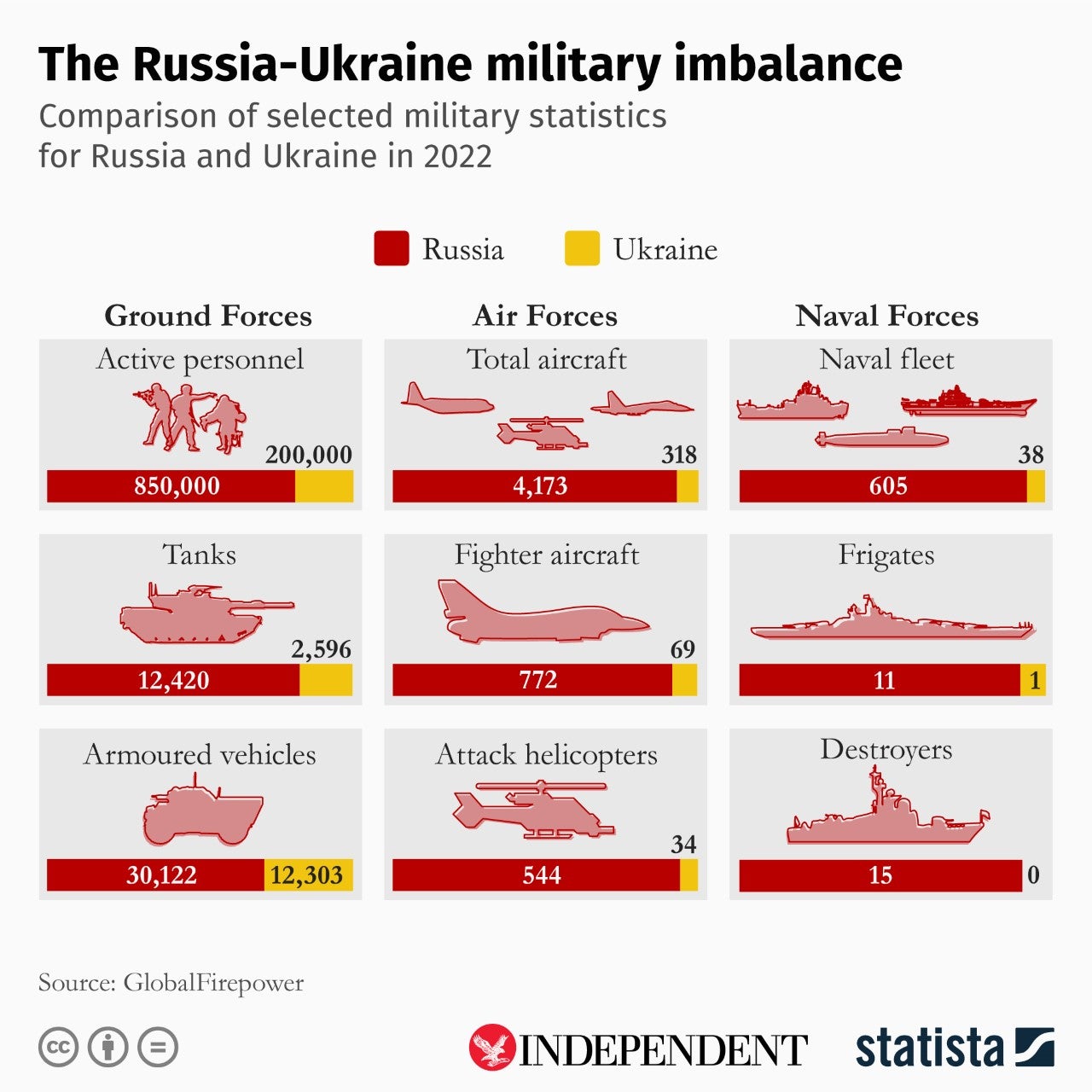
Mr Putin is believed to view the current situation as the first step towards correcting what he regards as Nato’s encroachment into countries like Ukraine that were previously ruled by the Soviet Union prior to its collapse in 1989.
With polls showing that a large majority of Ukrainians would like their country to become a member of the military alliance, Moscow wants the West to promise that this will never come to pass, something Nato has categorically ruled out.
Mr Putin laid out his own thoughts on Ukraine and its relationship with Russia in a 5,000-word essay published last summer.
Entitled “On the Historical Unity of Russians and Ukrainians”, the treatise was “one step short of a declaration of war”, in the opinion of Anders Aslund, a senior fellow at the Stockholm Free World Forum.
The Russian president reiterated his claim that Russians and Ukrainians are “one people”, suggesting that his homeland was “robbed” when Ukraine won its independence from the USSR.
Elsewhere in the essay, he offered more overt threats towards Kyiv, declaring: “I am confident that true sovereignty of Ukraine is possible only in partnership with Russia.”
A matter of months later, he dispached his tens of thousands of troops to the border.
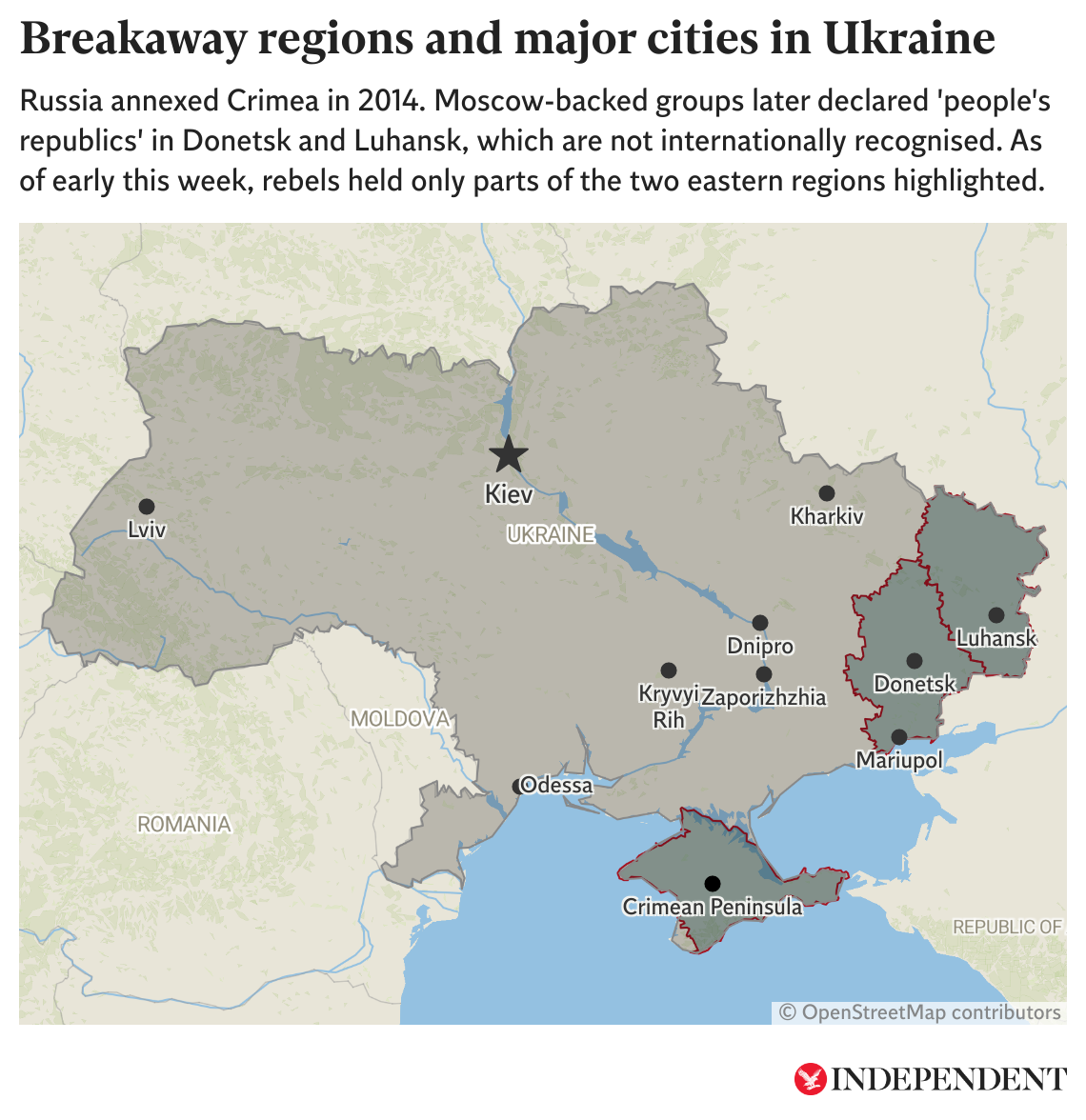
Kremlin spokesman Dmitry Peskov had repeatedly denied that Russia intended to invade and countered that it was really Western weapons being delivered to Ukraine, the country’s own military manoeuvres and Nato aircraft flights overhead that are really to blame for the rising tensions.
But, perhaps as a prelude to the coming storm, more than a dozen Ukrainian government websites were hacked in January.
The country’s foreign ministry initially said it was too early to say who was to blame but added pointedly that “there is a long record of Russian cyberassaults against Ukraine”.
The hackers left an ominous message on the websites they had disabled. “Ukrainian! All your personal data was uploaded to the public network. All data on the computer is destroyed, it is impossible to restore it,” it read.
“All information about you has become public, be afraid and expect the worst. This is for your past, present and future,” the message added.
